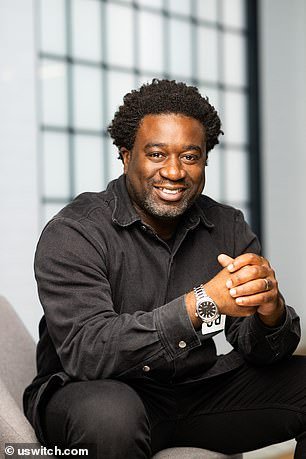Nearly a fifth of people are unaware that they could incur additional data roaming charges while on holiday abroad, data claims show.
Regulator Ofcom said 19 percent of people are unaware of the potential charges, while 18 percent fail to research roaming costs before visiting abroad.
These people will benefit from the new roaming rules that come into effect from October.
Under the new regulations, UK mobile users will be protected from accidentally building up huge roaming bills abroad, according to Ofcom.

Expensive: If you go abroad you could end up with a huge data roaming bill if you pay at the standard rates
Mobile operators will have to inform customers when they are going to roam and provide them with the necessary information on how to use their phone abroad.
It said this includes explaining any fair use limits or time limits on their data services, informing them that they can add a spending limit and directing them to more information about roaming.
According to Ofcom, the new rules will also prevent accidental roaming, where customers’ devices can roam to a network in another country even if they have not crossed the border.
Before Britain left the EU, mobile operators had to inform customers when they started roaming, and there was a global data roaming cap of £45. This is no longer the case, although many operators still choose to let customers know when they start roaming and have maintained a limit.
As many as 14 percent of British customers said they had experienced this, with people living in Northern Ireland particularly affected.
Some on the south coast of England have also found their phones connecting to French networks.
Ofcom’s new rules ensure people are warned when they start roaming.
Cristina Luna-Esteban, director of telecoms consumer policy at Ofcom, said: ‘The last thing holidaymakers want when returning from a trip abroad is an unexpected mobile phone bill. Currently, some customers are not receiving clear information from their carrier to help them manage their mobile usage and plan their spending.
‘Our new protections ensure that you are told what it will cost when you start roaming, so you can be confident that you won’t be faced with any surprises when it comes to your mobile bill while on holiday.’


Clarity: From October, providers are obliged to inform customers when they start roaming
With the new regulations not coming into effect until October and summer approaching, millions of people are still at risk of missing out on roaming charges.
During the Easter period alone, as many as 8.1 million people will go abroad, according to Uswitch, and face hefty roaming bills if they don’t plan ahead.
In fact, research from Uswitch shows that 61 percent do not check their carriers’ roaming policies before traveling, and 66 percent are unaware of fair use policies.
A fair use policy prevents customers from overusing a network and is often limited to the amount they pay for in the UK.
If the fair use limit is exceeded, special rates are charged, meaning customers can easily pay a bill without realizing they’ve violated the policy.
Nearly a quarter of Britons, 23 percent, plan to visit expensive roaming countries such as South Africa and Egypt this year.
According to the switching service, someone visiting China for a week and using 1GB of data per day could leave with a roaming bill of more than £40,000.
This way you can avoid roaming costs this summer
Before the new rules come into effect, travelers abroad still risk being stung by an eye-watering bill if they don’t take the right precautions when it comes to their phone.
“Using your phone abroad has become as essential for most travelers as packing your toothbrush,” says Ernest Doku, telecoms expert at Uswitch. ‘But no one wants the holiday rush to be ruined by a shocking mobile bill’


Switch SIM cards: Ernest Doku suggests looking at short-term and eSIMs as cheaper options
Holidaymakers should make sure they check their network’s roaming policy before heading abroad, Doku said. While roaming in EU countries is still easy, of the four main network providers in the UK, only O2 does not charge extra for it.
Three, EE and Vodafone are all adding at least £2 per day for contract customers.
Several other providers, such as BT Mobile and Giffgaff, offer free roaming in Europe.
‘Even if you and someone else you know use the same network, your individual roaming contract or fair use fee may be different from theirs. This all depends on which contract you have, so we recommend always checking your rate,” Doku said.
Outside the continent, however, things are a bit more difficult. Customers will have to purchase an expensive data roaming pass from their provider. These are also available for European travel to avoid daily rates.
The alternative is to take the hit of standard roaming charges, which will likely hit your bank account even faster.
“While Uswitch supports Ofcom’s recent announcement about improved protection around clarity, there is still virtually nothing to stop carriers from charging huge amounts when you use your phone abroad,” Doku said.
What is a travel eSim?
Another option is to purchase a temporary digital SIM card, which will allow you to connect to a local network in the country you are visiting.
Doku added: ‘There are some great deals out there, so it’s worth checking out a short-term SIM card or eSIM for travel as a cheaper option.
‘In the simplest terms, an eSim is short for ’embedded Sim’ and replaces the need for a physical ‘card’ that inserts into a phone and is able to provide all your connectivity settings digitally.
‘ESims make it easier to switch networks, so if you’re roaming abroad you can easily connect to the local network without having to add or change a physical card for your device.
‘You can keep multiple SIM profiles on your device, so if you regularly change numbers or travel to different locations, you can keep them all safely in digital format and not risk carrying – and potentially losing – several small cards.
‘If in doubt, contact your provider to discuss roaming limits, what you can use with your current deal and how much it will cost.’
Some links in this article may be affiliate links. If you click on it, we may earn a small commission. That helps us fund This Is Money and keep it free to use. We do not write articles to promote products. We do not allow a commercial relationship to compromise our editorial independence.
